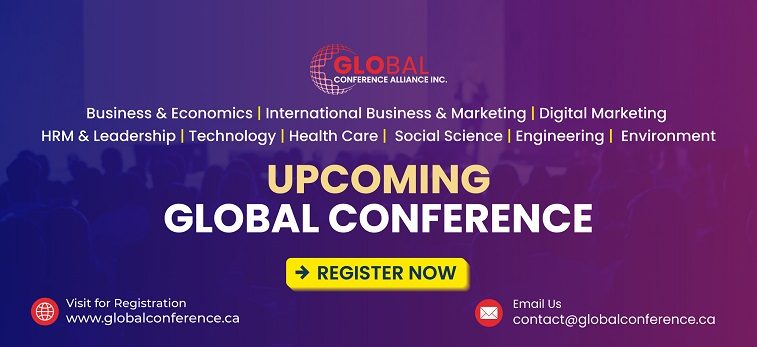Some of the best conference experiences don’t happen when you go with a group; they happen when you go alone. Surprising? Many professionals discover more learning, deeper conversations, and better networking opportunities when they take this step by themselves.
Attending solo puts you in charge from the very start. You decide where to sit, which sessions matter most, and who is worth meeting. There’s no waiting on others, no split schedules, just complete freedom to focus on your own goals.
That’s exactly why these 8 tips for attending a conference alone are worth reading. They’ll show you how to approach the event with confidence, turn uncertainty into meaningful connections, and walk away with knowledge that sticks. Keep reading to see how it’s done.
8 Tips for Attending a Conference Alone
Heading to a conference by yourself can feel a little complicated at first, but it doesn’t have to be. With the right mindset and a few smart moves, you can turn it into one of the most rewarding experiences. Here are eight practical tips to help you make the most out of attending solo.
1. Plan Ahead with Purpose
Don’t just skim the schedule; look at the sessions that truly interest you. Make a short list of talks, panels, or workshops you don’t want to miss. This way, you’ll arrive each day knowing where to go and won’t waste time feeling lost.
2. Keep an Open Mind
It’s natural to feel a little shy when you’re alone, but that’s often when the best things happen. Say yes to sitting with new people or checking out a session that wasn’t on your radar. Some of the most meaningful connections happen by chance.
3. Speak Up and Ask Questions
If something sparks your curiosity, raise your hand or chat with the speaker afterward. Asking a thoughtful question not only helps you learn but also makes you more visible to others who might want to connect with you.
4. Use Conference Apps or Digital Tools
Most conferences now have apps where you can view schedules, join discussions, or message attendees. Use these tools to connect with people before and during the event. A simple message like:
Example:
“Hi [Name], I saw you’re also attending [Conference]. I’d love to connect and hear more about your work in [field/topic]. Are you free for a quick chat during a break?”
5. Set Small Networking Goals
Instead of pressuring yourself to meet dozens of people, aim for something simple like introducing yourself to three new people each day. Going to networking events alone becomes much easier when you focus on small, realistic targets.
6. Join Social Mixers or Informal Events
Evening mixers, coffee breaks, or casual meetups are perfect for conversations. If you’re going to a networking event alone, a friendly opener like, ‘What’s been your favorite session so far?’ works wonders.
7. Take Care of Yourself
Conferences can be tiring with long days, packed schedules, and lots of talking. Make sure you eat well, drink water, and take short breaks. Resting helps you stay alert and ready to engage with others.
8. Reflect and Take Notes Each Day
At the end of the day, note down key insights, interesting conversations, or follow-ups you want to make. This helps lock in what you learned and makes it easier to reach out to new contacts later.
Going to a conference alone might feel challenging, but it can also be a chance to focus on what matters most to you. Whether it’s smaller local events or larger conferences in Canada, the USA, or anywhere else in the world, the same approach works: planning, connecting, and showing confidence always pays off.
What Should You Do Before Going to a Conference?
Walking into a conference alone feels easier when you’ve done a little prep ahead of time. It’s not about overloading yourself with tasks, but making sure you’re ready for the basics. A few smart moves before the event can make the whole experience smoother. Let’s break down what’s worth doing before you arrive.
Research Speakers and Sessions in Advance
Look through the event schedule and highlight the sessions or speakers that interest you most. This helps you avoid last-minute decisions and gives you talking points when meeting people. Knowing what’s coming up also saves time and reduces stress.
Prepare a Short Self-Introduction
Have a quick introduction ready that sums up who you are and what you do. Think of it as a “30-second pitch” you can use when meeting someone new. Keeping it simple makes you feel confident and stops those awkward pauses.
Bring Business Cards or Digital Contact Options
You don’t need a huge stack of cards, but having a way to share your info quickly is a must. If you prefer digital, set up a QR code or contact app on your phone. This makes exchanging details smooth and hassle-free.
A little planning before the conference saves you from feeling lost when you arrive. With the right sessions picked, an introduction ready, and a way to share contacts, you’ll walk in prepared and focused on making the event worthwhile.
Pocket Scripts & Conversation Starters
Starting conversations at a conference can feel awkward, especially when you’re on your own. The good news is, you don’t need to overthink it. A few simple lines can break the ice and open the door to genuine connections. Let’s look at some ready-to-use examples you can try.
Pre-event LinkedIn/Email DM
Sending a quick message before the event makes meeting new people much easier. It shows you’re proactive and interested without being pushy. Keep your note short, friendly, and specific about what you’re looking forward to at the conference.
Example:
“Hi [Name], I noticed you’re also attending [Conference Name]. I’m really looking forward to the sessions on [topic]. It would be great to connect and maybe say hello during one of the breaks!”
Coffee-line Opener
Lines for coffee or food are some of the easiest places to start casual chats. Everyone’s waiting, and a simple comment can quickly turn into a longer conversation. Use this moment to introduce yourself and ask a light, open-ended question.
Example:
“This line is always the busiest spot, right? I’m [Your Name]. Which session are you most excited about today?”
Post-session Thank-you Message
Reaching out after a session is a natural way to stay connected with speakers or other attendees. A short thank-you note shows genuine appreciation and keeps the conversation alive after the event is over. This works well on LinkedIn or by email.
Example:
“Hi [Name], I really enjoyed your session on [topic]. Your point about [specific detail] was very useful. I’d love to keep in touch and learn more about your work—would you be open to connecting here on LinkedIn?”
These scripts aren’t meant to be memorized word-for-word. Instead, think of them as flexible templates you can adapt to your own style. With just a few thoughtful lines, you’ll find conversations start more naturally than you expect.
Safety & Comfort for Solo Attendees
Being on your own at a conference can sometimes feel a little uneasy, and that’s completely normal. A few simple habits can keep you comfortable and confident throughout the event. These aren’t complicated steps, but they can make a big difference in how relaxed you feel. Let’s go over some practical tips worth keeping in mind.
Keep Your Phone Charged
Your phone is your map, your contact book, and sometimes even your safety net. Carry a power bank or charging cable so you don’t end up disconnected in the middle of the day. Staying powered up means you can always reach out or check updates.
Know the Venue Exits
It’s not about being worried; it’s about being smart. Take a moment when you arrive to notice the exits, restrooms, and main points like registration or info desks. Knowing your way around instantly reduces stress and makes you feel more in control.
Stay Hydrated
With long sessions and plenty of conversations, it’s easy to forget water. Keep a refillable bottle with you so you don’t rely on random breaks to stay hydrated. Feeling fresh and alert helps you enjoy the event without running out of energy.
Pack Light and Smart
When you’re on your own, carrying too much can feel like a burden. Stick to the basics: notebook, pen, charger, snacks, and maybe a lightweight bag. The lighter you travel inside the venue, the more comfortable you’ll feel moving between sessions.
Secure Your Belongings
It’s easy to get caught up in conversations and forget your bag or jacket. Keep important items like your phone, ID, and wallet close to you at all times. A small crossbody or backpack with zippers works well to keep things safe without drawing attention.
Feeling safe and comfortable lets you focus on what really matters – learning, meeting new people, and capturing moments in a conference that stay with you long after the event. By preparing a little ahead of time, you’ll not only avoid unnecessary stress but also enjoy attending events alone with more confidence and comfort.
How Can Introverts Network at a Conference?
For many introverts, the thought of networking at a conference can feel draining. But the good news is you don’t have to push yourself into uncomfortable situations to make meaningful connections. With a few small steps, you can meet people at your own pace. Let’s look at some practical ways that make networking feel less intimidating.
Set Small, Simple Goals
Instead of aiming to meet dozens of people, pick one or two clear goals. For example, you might decide, “I’ll talk to two new people before lunch” or “I’ll introduce myself to one person in every session.” These mini-goals feel achievable and keep you moving forward.
Start With Smaller Workshops
Large crowds can be overwhelming, so begin with smaller breakout sessions or workshops. These settings naturally create chances to talk without the pressure of addressing a huge group. It’s easier to share thoughts in a smaller room where conversations flow more naturally.
Use the Event App to Warm Up
Most conferences now have apps or chat platforms where attendees can message each other. Use these tools to start conversations online before meeting in person. Sending a short note like, “Hi, I’ll be at the same session, want to grab a coffee after?” can make face-to-face introductions feel easier.
Networking as an introvert doesn’t mean forcing yourself into endless conversations. By setting small goals, choosing the right environments, and using event apps to break the ice, you can connect in ways that feel natural and comfortable for you.
Common Mistakes Solo Attendees Should Avoid
Even with the best intentions, it’s easy to fall into small habits that take away from the conference experience. These mistakes might not seem serious at the time, but they can stop you from getting the most out of the event. Let’s go through a few common ones so you’ll know what to watch out for.
Avoid Staying Glued to Your Phone
It’s tempting to scroll when you feel awkward, but being on your phone makes you look unavailable. Instead of meeting alone with your screen, use those in-between moments to smile, make eye contact, or simply be open to conversation. That little shift can create unexpected opportunities.
Don’t Stick Only to Familiar Topics
If you only attend sessions that feel safe or are directly connected to your work, you might miss out on fresh ideas. Explore something different, even if it feels slightly outside your field. Often, those sessions spark the most interesting conversations afterward.
Don’t Skip Social Events
Networking doesn’t only happen in the main sessions. Mixers, coffee breaks, or evening gatherings are where people often connect more naturally. Skipping these moments might mean missing out on valuable contacts you wouldn’t meet otherwise.
By avoiding these small but common mistakes, you give yourself a better chance to enjoy the conference fully. Staying present, trying new things, and showing up for social moments all add up to a richer and more rewarding experience.
What to Do After Attending a Conference?
The event may be over, but the value doesn’t stop once you leave. What you do next often decides how useful the conference really was for your growth. Here are five simple steps to keep the momentum going and make the most of your experience.
Review Your Notes
Go through your notes while the ideas are still fresh in your mind. Highlight the key takeaways, circle the most interesting points, and mark anything that feels worth trying immediately. This helps you retain knowledge instead of letting it fade.
Connect on LinkedIn
Don’t wait too long to reach out. Send a short, personal connection request to the people you met. A thoughtful post-conference follow-up makes your interaction more memorable and keeps the connection alive for future opportunities.
To make things even easier, here’s a simple follow-up email template you can use within 24 hours of meeting someone at the conference.
Subject: Great meeting you at [Conference Name]
Hi [First Name],
It was such a pleasure meeting you at [Conference Name]. I really enjoyed our conversation about [specific topic] and found your insights on [mention detail] very valuable.
I’d love to stay connected and continue our discussion, especially around [shared interest]. If you’re open to it, maybe we can schedule a quick follow-up call or stay in touch here on LinkedIn.
Thanks again for your time, and I look forward to keeping in touch.
Best regards,
[Your Full Name]
[Your Job Title / Company]
[LinkedIn Profile Link or Contact Info]
Share with Your Team
If your coworkers couldn’t attend, pass along the most useful points you learned. Sharing new insights not only helps your team but also shows that your attendance brought value back to the workplace. It’s a win for everyone.
Implement One New Idea
Don’t let everything stay on paper. Choose one practical idea from the conference and put it into action quickly. Even a small change at work proves the conference was worth attending and keeps the learning from going stale.
Set Next-step Goals
Think about what comes next and write it down. It could be following up with a contact, joining a project, or registering for another event. Having clear goals ensures the benefits of the conference last beyond the closing session.
By reviewing, connecting, sharing, acting, and planning, you turn a short event into long-term progress. These steps keep the conference fresh in your mind and help you get real value long after the event has ended.
Frequently Asked Questions
Attending a conference alone often raises a few extra questions beyond the usual tips and checklists. To make things easier, here are some common concerns solo attendees might have and practical answers to help you out.
How Do I Choose Where to Sit?
Pick a spot that feels comfortable but also open for conversation, like the middle rows or near the edges of group tables. Avoid sitting at the far back, where interaction is limited. Choosing the right seat can naturally invite people to sit with you.
What Should I Carry Inside the Conference Hall?
Keep it light with essentials like a notebook, pen, phone charger, and maybe a water bottle. Carrying too much can make moving between sessions uncomfortable. A small bag helps you stay organized without feeling weighed down.
How Do I Handle Awkward Downtime Between Sessions?
Instead of scrolling endlessly on your phone, use breaks to review notes or glance at upcoming sessions. You can also strike up a casual chat with someone nearby. Small moments often create the easiest openings for new connections.
What If I Forget Someone’s Name After Meeting Them?
It happens more often than you think, and it’s nothing to stress about. Politely say something like, “I’m sorry, I forgot your name. Could you remind me?” People usually appreciate honesty and respond kindly.
How Can I Avoid Feeling Overwhelmed by the Crowd?
Take short breaks outside the hall or find a quieter corner when you need to recharge. Give yourself permission to step away instead of forcing constant interaction. Returning with a clear head makes conversations much smoother.
Should I Collect Business Cards or Go Digital?
Both work fine, but digital contact sharing is often quicker and easier. Apps and QR codes are becoming common, though having a few cards shows professionalism. It’s best to use whichever option feels natural to you.
Is It Okay to Attend a Session Alone?
Absolutely, many people do it. Sitting alone doesn’t make you stand out negatively – in fact, it shows independence. You can always greet the person next to you if you want to spark a quick conversation.
Concluding Lines
Closing a conference as a solo attendee doesn’t have to feel uncertain. In fact, when you show up prepared and ready to engage, you often discover new strengths you didn’t realize you had. The experience can quickly shift from intimidating to empowering.
The 8 tips for attending a conference alone give you clear ways to plan, connect, and stay confident throughout the event. From choosing the right sessions to making meaningful conversations, these simple steps help you get more value out of the time you invest.
Eventually, attending alone is less about being by yourself and more about opening new doors. With the right mindset, you’ll leave with fresh knowledge, stronger connections, and a conference experience that feels worthwhile.









